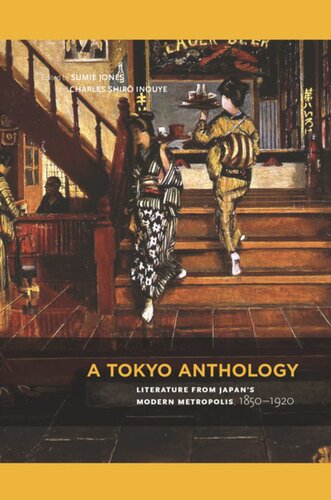

Most ebook files are in PDF format, so you can easily read them using various software such as Foxit Reader or directly on the Google Chrome browser.
Some ebook files are released by publishers in other formats such as .awz, .mobi, .epub, .fb2, etc. You may need to install specific software to read these formats on mobile/PC, such as Calibre.
Please read the tutorial at this link: https://ebookbell.com/faq
We offer FREE conversion to the popular formats you request; however, this may take some time. Therefore, right after payment, please email us, and we will try to provide the service as quickly as possible.
For some exceptional file formats or broken links (if any), please refrain from opening any disputes. Instead, email us first, and we will try to assist within a maximum of 6 hours.
EbookBell Team

4.0
26 reviewsThe city of Tokyo, renamed after the Meiji Restoration, developed an urban culture that was a dynamic integration of Edo’s highly developed traditions and Meiji renovations, some of which reflected the influence of Western culture. This wide-ranging anthology—including fictional and dramatic works, essays, newspaper articles, political manifestos, and cartoons—tells the story of how the city’s literature and arts grew out of an often chaotic and sometimes paradoxical political environment to move toward a consummate Japanese “modernity.”
Tokyo’s downtown audience constituted a market that demanded visuality and spectacle, while the educated uptown favored written, realistic literature. The literary products resulting from these conflicting consumer bases were therefore hybrid entities of old and new technologies. A Tokyo Anthology guides the reader through Japanese literature’s journey from classical to spoken, pictocentric to logocentric, and fantastic to realistic—making the novel the dominant form of modern literature. The volume highlights not only familiar masterpieces but also lesser known examples chosen from the city’s downtown life and counterculture.
Imitating the custom of creative artists of the Edo period, scholars from the United States, Canada, England, and Japan have collaborated in order to produce this intriguing sampling of Meiji works in the best possible translations. The editors have sought out the most reliable first editions of texts, also reproducing most of their original illustrations. With few exceptions the translations presented here are the first in the English language. This rich anthology will be welcomed by students and scholars of Japan studies and by a wide general audience interested in Japan’s popular culture, media culture, and literature in translation.